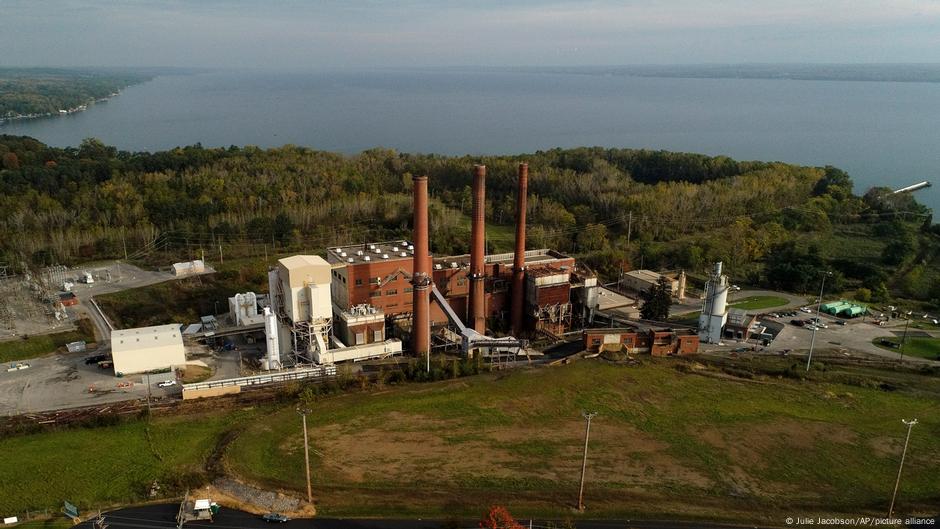Bitcoin Mining Strains US Rural Communities: Environmental and Economic Impact

Tensions Rise in Dresden Over bitcoin Mining and Environmental Concerns
The Sound of Change in Dresden
In the serene village of Dresden, located on the western banks of Seneca Lake in New York, the daily noon fire whistle is a comforting reminder of small-town life. However, for some of the 300 residents, the persistent hum from the Greenidge Generation facility is a source of frustration. Once a coal-powered plant, it now operates as a natural gas “peaking plant” that meets New York’s electricity demands during peak times and has recently added a bitcoin mining operation.
Residents describe the noise as a low hum akin to a refrigerator, but when the wind shifts, it can escalate into a disruptive roar. Winton Buddington, a local homeowner, recalls the village’s tranquility before 2017, when Atlas Holdings acquired the site. Retired nurse Beth Cain emphasizes the negative effects of constant noise, likening it to the experience of tinnitus.
Environmental and Community Concerns
The noise pollution is just one of the many issues troubling locals. The plant also discharges heated water into the lake and emits greenhouse gases, raising alarms among community members. Yvonne Taylor, vice president of Seneca Lake Guardian, an environmental advocacy group, warns that the plant threatens the region’s economy, which relies heavily on tourism and agriculture.
Taylor highlights the importance of clean air and water for the wine and tourism industries, which are vital to the local economy.
The Impact of bitcoin Mining
The bitcoin mining operation at Greenidge consumes vast amounts of energy, utilizing thousands of servers to solve complex mathematical problems that validate blockchain transactions. By 2021, the facility was generating approximately 44 megawatts for bitcoin mining, enough to power around 40,000 homes, depending on their energy consumption.
Colin Read, author of The bitcoin Dilemma, explains that each mining machine can perform about 100 trillion calculations per second, leading to significant energy consumption and emissions. According to Earthjustice, the facility emitted nearly 800,000 tons of carbon dioxide and equivalent gases in 2023, comparable to the emissions from over 170,000 vehicles.
The Growing Crypto Mining Landscape
As of early 2024, there were 137 crypto mining facilities operating across the United States. Experts like Troy Cross from the bitcoin Policy Institute anticipate that under the current administration, bitcoin companies will face fewer regulatory hurdles, particularly in energy-rich states like Texas.
Taylor warns that bitcoin mining operations are proliferating in rural areas, often under the guise of job creation, but the reality is that these promises frequently fall short. The Greenidge facility employed only 48 full-time workers in 2022, a number comparable to a typical fast-food restaurant.
Environmental Ramifications of Mining Operations
Margot Paez from the bitcoin Policy Institute criticizes the decision to locate a bitcoin mine next to a natural gas plant, calling it a poor choice. She suggests that bitcoin miners should consider renewable energy sources instead. New York’s draft environmental impact assessment indicates that energy demands from crypto operations may hinder the state’s renewable energy goals.
Residents are also concerned about the plant’s water usage, as the mining operation requires substantial amounts of water for cooling. The facility is permitted to withdraw up to 139 million gallons from Seneca Lake daily, returning water that is significantly warmer than when it was taken out. This temperature increase raises concerns about its effects on local aquatic life and the potential for harmful algae blooms.
The Future of Tourism in Dresden
In Dresden, where some residents rent out properties to tourists, there are fears that the nearby Greenidge facility will negatively impact the local rental market. Even in nearby Geneva, business owners like Vinny Aliperti of Billsboro Winery express concerns about the long-term effects of the bitcoin mining operation on tourism, which is closely tied to the area’s clean lakes.
Community Response and Future Outlook
Greenidge, which promotes itself as an environmentally responsible power generator and bitcoin miner, had not responded to inquiries by the time of publication. The Torrey Town Board, which oversees Dresden, asserts that the plant has adhered to all regulations, including an independent noise assessment.
While the facility has contributed to local initiatives, such as supporting the volunteer fire department and local businesses during the pandemic, residents like Winton Buddington argue that these benefits do not outweigh the environmental costs and pollution associated with the plant’s operations.







